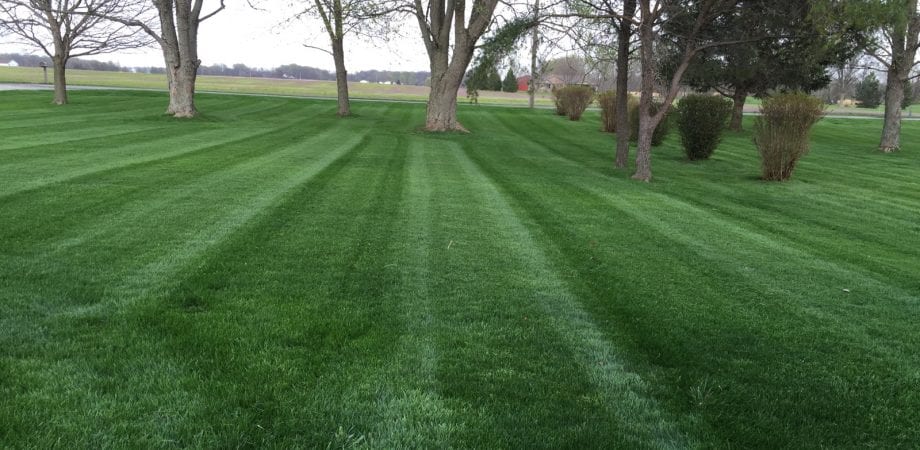Preparing Your Lawn for a Long Winter Nap

It has been a crazy year for the Midwest! We started with enormous amounts of rain, then more rain, and…even MORE rain! Mother Nature then added temperatures in the high 80s/low 90s with high winds. Along with the rain and heat came disease problems in the turf. From late August into September, we had those few weeks of drought. The turf took a beating, but all is not lost. Preparing turf for winter during the fall months will help it recover and come back thick, green, and healthy next spring.
Start with a core aeration to break up all the compaction from mowing, foot traffic, and hot temperatures. This will allow air, nutrients, and water to penetrate the soil. It also helps the roots to expand, giving you a healthier, thicker lawn next season. A thicker lawn will result in fewer weeds and give your turf the ability to become more weed resistant. Overseeding after aerating will increase your lawn’s volume and allow the seed to make contact with the soil and establish quicker. For even more seed-to-soil contact, do a double pass aeration.
Your final cut of the season should be shorter than the in-season cuts. By cutting your lawn shorter in the late fall, you will help to prevent moisture build-up and stop diseases like snow mold from developing later. Also, make sure leaves are mulched and removed. Leaves left lying on top of your lawn can suffocate it.
A late fall feeding with a quick release, high-nitrogen fertilizer is a must. This feeding should be done after the final cut while the turf is still green, but has stopped growing. This final feeding will result in an earlier, dark green lawn next spring. A quick-release nitrogen such as 34-0-4 All Mineral or 46-0-0 is ideal for the final feeding. Use both at a rate of .5 to 1 lb. of nitrogen (N) per 1000 square feet.
And don’t forget about your ornamentals like boxwood, holly, rhododendron, azalea, and spruce…just to name a few. By spraying them with Precision Laboratories AquaLock at a rate of 4-8 oz./gal, you will protect them against desiccation, extreme temperatures, and damage due to frost. For best results, apply AquaLock while temperatures are above 40°F. Avoid applying during periods of frost, and delay applications when rain is anticipated. If plants are in drought stress, water the plants prior to application.
After you have prepared your lawn and garden for a long winter nap, do a snow dance, have a great winter, and we’ll see you in the spring!
Dave Bash
Sales Representative







